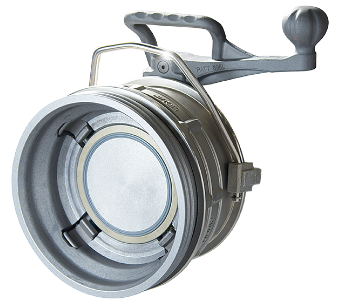
A lot of time, thought and effort is needed when identifying a solution that optimises terminal operations, explains David Morrow
Imagine seeing a notice asking for symphony orchestra musicians to be at a concert hall on a certain day and time, prepared to play Beethoven’s Fifth Symphony. Sure, the individual musicians who responded would likely have the talent to play the piece and maybe even some past experience doing so, but the performance as a whole would probably be disjointed since the players would not be familiar with the conductor or their fellow performers.
Which leads us to another thought experiment: now try outfitting a storage terminal in the same manner, just selecting a bunch of loading-arm system equipment that probably should work well together, but with no past experience of actually doing so. The operation of that equipment would probably be about the same as the sound of that thrown-together orchestra – out of tune and disjointed, though with one major caveat: the orchestra can always practice in order to get better, whereas an incompatible loading-arm system has no chance of improving without some major (and costly) design modifications.
In other words, much like the orchestra, “harmony” is the key to the successful design of a loading-arm system. However, achieving that perfect harmony – where all components work seamlessly in a system that is efficient, easy to operate and safe for the user – takes a great deal of time, due diligence and native knowledge. It’s simply not just a case of choosing a loading-arm system, it is a case of choosing the “right” loading-arm system.
Know the basics
While all facilities that load and unload railcars and tank trucks (storage terminals, chemical plants, refineries, etc.) serve the same basic function – facilitating the arrival, storage and departure of various liquids via various forms of transportation – each one is unique in its operational design and setup. This means that the ones that are truly able to achieve and maintain elevated levels of efficiency, reliability, safety and ergonomic operation are those that have managers who put in the hard hours to determine the best loading-arm system to deploy.
Only when the site manager fully understands the idiosyncrasies that are built into his product-loading and unloading operation will he be able to outfit the site with a system that meets all of the operation’s specific needs. In general, there are three variables that must be considered before selecting the loading-arm system that will be designed for the site. They are: the site; the product; and transport.
With regard to the site, it’s a cliché, but it’s tried-and-true: the “location, location, location” of the loading racks will be the main determining factor in which type of loading arms will be able to be used, along with where all ancillary equipment and structures will be positioned. After determining the number of loading positions, the system designer must choose the best spot for the risers, which are the foundation of the system. If several arms are to be used, all risers must be located so that they do not interfere with the operation of the other arms. The arms must be positioned so that they can move up, over and around any possible obstructions, from light poles, support columns and power lines to meters, gangways and safety cages, as well as fit under a roof if it is a covered application. Loading arms can be heavy, so proper structural support must also be built into the system design, with improperly supported arms being difficult to move and potentially dangerous for the operator to handle.
When it comes to the product, the specific facility’s commodity “menu” can feature a wide range of diverse products, from wastewater to anhydrous ammonia and biodiesel to sulfuric acid, all of which have different handling characteristics. Liquids with water-like viscosities will need to be handled differently than those with the consistency of molasses, while hazardous or corrosive liquids need to be transferred through equipment that is compatible with their volatile nature. Some liquids will also thicken, crystallise or even freeze as ambient temperatures change, which may also create a need for a heat-tracing system or steam jackets. Finally, with throughput rates being the heartbeat of the terminal operation, the loading-arm system must be able to reliably produce desired flow rates, which goes hand-in-hand in determining the actual size of the piping that will be needed.
Finally, when it comes to the issue of transport, the design and setup of the facility will pre-determine the method of loading and unloading, either bottom or top, that will be need to be used. Bottom loading is the preferred method for petroleum products because trucks are standardised, while top loading is more common in chemical-handling applications. In either case, it is good practice to walk through the entire loading/unloading process to determine what an ideal process looks like. Bottom-loading connections are also easier to perform, and if the transport has several compartments, overall loading/unloading time will be reduced. Bottom-loading bays also require less equipment and poured concrete, which makes them more economical. In the instances where top loading is used, the loading system must have enough horizontal range so that the arms can reach the farthest compartment without needing to respot the vehicle; the system must make mis-spotting a rare occurrence as any need to relocate the railcar or transport truck is lost loading/unloading time. The facility operator must also consider how the product will be top-loaded, either splash-filled through an open manway or through a hard connection. If hard connections will be used, the operator has many options available: hard or soft connection, quick- or dry-disconnect technology and whether any valving will be needed. Finally, a level-detection system is normally recommended as a secondary shutoff that reliably indicates when the loading process is completed. Overfills lead to spills and unsafe working conditions, with the potential to do harm to the environment and surrounding communicates if the spilled substance is hazardous or dangerous.
Some final general considerations that must also be taken into account include whether or not special non-destructive testing of the loading-arm equipment is required; are any special welding procedures needed; is insulation designed to protect the operator from handling hot piping required; will any additional weight be added to the loading arms after installation; and will there be any need for connections to aid in venting or blowing down product from the arm at the end of the loading/unloading process.
From the field
Now that we know what to look for when designing a loading-arm system, let’s take a look at a recent application that took all of those variables into account and resulted in a new, more efficient loading/unloading process at a petroleum-product storage terminal.
The high-volume bottom-loading terminal in Kentucky, USA, was originally built in the 1970s, but had undergone a number of “on the fly” upgrades, expansions and reconfigurations to its truck-loading lanes. These modifications had ultimately resulted in an unorganised loading-system layout. Specifically, the system had grown to consist of a hodge-podge of components that was cumbersome to operate due to poorly spaced and incompatible arms. This led to loading inefficiencies while putting increased strain on the drivers via the non-ergonomic system design.
In the search for a solution, the terminal operator and his loading-arm system provider determined that the biggest issue was the fact the loading arms did not effectively cross over one another. This meant that it had become difficult for the drivers to access the required arm without needing to move other arms out of the way first, or to load more than one compartment at a time.
So, a new layout design that incorporated the ideal spacing and staggering of the arm mounts was created featuring short-range hose loaders that allow simultaneous connecting to and filling of up to three product lines. They are generally stored horizontally with only slight upward or downward movement required to align the coupler with the truck adaptor. Additionally, dry-break API couplers with the ability to ensure reliable and easy connection to a tank truck or railcar were added.
Additionally, new mounting risers for the truck lanes were spec’d and designed that enabled the loading arms to be installed in the optimal mounting configuration.
Today, the redesigned loading system has arms that are able to cross over and clear one another, which allows easy access to the desired arm and the ability to quickly and efficiently load multiple compartments at the same time. The arms are also more ergonomic in that they store and balance at roughly the same height as the truck adaptors. This means that little effort or strain is required from the drivers to connect and disconnect the arms to the truck adaptors and return the arms to their storage position at the completion of the loading process. Finally, with all of the new system’s components sourced from the same supplier, it is easier to order, stock and track spare and replacement parts. And all of this took just six weeks from purchase order to installation.
Conclusion
It should be obvious: if a storage terminal’s loading-arm system is to make “sweet music,” it must be designed with the needs of the site layout itself, as well as those of the individual components, in mind. It’s much easier to find that harmonious balance if all loading-arm system components are sourced from the same supplier, one that has many years of experience designed and engineering systems that meet the needs of every unique installation.
BRIEF INTRODUCTION
Cnbearing is the No.1 bearing inquiry system and information service in China, dedicated to helping all bearing users and sellers throughout the world.
Cnbearing is supported by China National Bearing Industry Association, whose operation online is charged by China Bearing Unisun Tech. Co., Ltd.
China Bearing Unisun Tech. Co., Ltd owns all the rights. Since 2000, over 3,000 companies have been registered and enjoyed the company' s complete skillful service, which ranking many aspects in bearing industry at home and abroad with the most authority practical devices in China.

